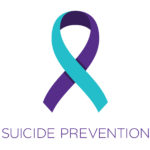5 Myths About Teen Suicide

Suicide is the second leading cause of death for people ages 10 to 34 in the United States. For years data has been showing an alarming and consistent increase in youth suicidal ideation and attempts. Those increasing trends are likely being further exacerbated as youth struggle to cope with the effects of the pandemic, economic crisis, racial injustice, climate change, political divide, school shootings, and more.
If you know a child or teen struggling with suicidal thoughts, call Camber at (913) 890-7468 or call the 988 Suicide and Crisis Lifeline at 988.
The Centers for Disease Control and Prevention (CDC) published a report in September of 2020 showing that the suicide rate among people aged 10 to 24 in the United States increased 57.4% from 2007 to 2018. There was a significant increase across 42 U.S. states, with Kansas and Missouri being among the states with the highest increases. According to another recent CDC study, in 2020 there was a 31% increase in the number of visits to hospital emergency departments (EDs) for mental health-related crises for children aged 12 to 17 years.
Suicide among youth has become a prominent public health issue.
What does that mean? Our young people are struggling more every year, the problem is getting worse, and it’s occurring at high rates throughout most of the U.S. Suicide has likely impacted most peoples’ lives in one way or another. Its effects are devastating for the person who attempts suicide or dies by suicide as well as all the people who survive them and mourn that loss. We all must play a part in sharing awareness, prevention steps, resources, and support to make sure those in need of help know they aren’t alone and know where to go before they reach a crisis.

Teen suicide is especially a growing concern and this blog shares some of the biggest myths that may hinder teens or kids of all ages from getting help when they need it. The truth about suicide in teens and children is often misunderstood, resulting in increased stigma and losses of life that could have been prevented. By learning these myths, understanding facts, being aware, and sharing credible information you can help save a life. Keep reading to learn about the five most common myths and the facts.
MYTH #1: People who talk about suicide won’t actually do it.
FACT: There is a common misconception that if someone is talking about suicide, they just want attention, and won’t actually do it. However that is far from the truth and in most cases where someone attempts or dies by suicide, there were warning signs in their behaviors and/or conversations. Talking about suicide, or more broadly the topic of death, can be very difficult and even feel uncomfortable, but talking about suicide can save someone’s life. If someone tells you they are thinking about suicide, take them seriously. Listen to them with empathy and without judgment. Ask them what you can do to help them and encourage them to seek professional counseling or treatment.
Also, learn the warning signs of suicide so that you are aware of concerning or risky behaviors that might indicate someone is struggling. While someone may not be talking about their suicidal thoughts, their actions, behaviors, or physical health may be displaying their internal battle.
MYTH #2: Talking about suicide makes people more likely to commit suicide.
FACT: Research indicates that talking about suicide can reduce suicidal ideation. From a review of many published studies on this topic, none found evidence suggesting that talking about suicide increased risk. Talking with an adolescent or teen, in an age-appropriate way, creates an opportunity for them to share their feelings, ups and downs, or concerning thoughts that might otherwise continue to be internalized and hidden from others to the point that they reach a crisis or attempt suicide. Most youth who are contemplating suicide are relieved when asked direct questions about their suicidal thoughts. It helps them express themselves, seek treatment, and know that someone cares about them.
MYTH #3: Only youth who are depressed attempt suicide.
FACT: Many people who attempt suicide or who die by suicide do not have a clinical diagnosis for depression or any other mental health disorder. According to the CDC, of the people who died by suicide in 2019, more than half of them—54%—did not have a known mental health condition. While there is a link that people who are diagnosed with depression may experience suicidal thoughts or attempts as part of their symptoms, not every person diagnosed with depression has suicidal thoughts or attempts suicide.
There is no single cause of suicide. Different risk factors may indicate an increased risk of suicide for someone—but someone without those risk factors may think about suicide and there are many reasons why someone might have these thoughts. Youth are in very influential, developmental phases and may be experiencing a range of pressures and stress that overwhelm them and lead to suicidal thoughts. Openly discussing feelings and understanding the challenges related to suicide is a vital part of prevention, as is helping in a crisis and creating a safety plan for healing.
MYTH #4: Only a certain type of person attempts suicide or dies by suicide.
FACT: Suicidal thoughts and attempts can happen to anyone regardless of gender, race, age, upbringing, education level, ethnicity, or other demographic, lifestyle or socio-economic factors. As mentioned previously, there are risk factors that may indicate a higher risk of suicide for someone, but all people are susceptible to having thoughts of suicide—including people who don’t have any of those risk factors.
Similarly, someone who has one or more risk factors also may not have suicidal thoughts. It’s impossible to look at a person’s life and based on those facts determine if they will or won’t experience mental illness. Everyone is different and everyone is at risk. By making assumptions about who may or may not have suicidal thoughts, we are missing the critical step of giving every person a safe, healing space to talk about their feelings without judgment. By removing assumptions that certain people should or should not have suicidal thoughts, we further help reduce the stigma around suicide and mental health overall.

MYTH #5: Suicide is not preventable.
FACT: People may think that if someone wants to end their life, nothing can be done to prevent it but that isn’t true. Early identification and intervention make it possible to help someone before they attempt suicide. By knowing the risk factors and warning signs and openly talking with people who are struggling, you can be their lifeline. You can help them get connected to supports and resources before they are in crisis or attempt to end their own life.
Suicide is preventable. Professional counseling, medications, and other treatment approaches have proven to be very successful in helping people reduce and overcome suicidal thoughts. At Camber Children’s Mental Health, our compassionate treatment teams are helping youth with this and other mental health conditions every day. Over our 30 year history, we have seen thousands of children experience successful outcomes with treatment to overcome struggles with suicide, self-harm, depression, anxiety, the impacts of trauma, and more.
About Camber (previously KVC Hospitals)
For 30 years Camber (previously KVC Hospitals) has provided compassionate treatment to children and teens who are struggling with suicidal thoughts and other mental health challenges. The goals of our treatment programs include:
- Stabilizing the crisis a child is experiencing and identifying the triggers that led to the challenging behaviors or emotions.
- Identifying the treatment approach that works best for each child to best teach and support healthy and safe behaviors.
- Improving the child’s ability to regulate emotions, communicate and promote healthy behavior.
- Providing resources and support for the child and their family following discharge.
We want each child to return home as soon as safely possible with the resources and support in place to live a healthy and happy life in their community. If you’re worried that a child in your life may hurt themself, call us at 913-890-7468 to find out how we can help. We have inpatient mental health hospitals for children in Wichita and Kansas City, KS, and residential treatment for longer-term stays in Kansas City and Hays, KS.
Learn more about suicide prevention in other related blogs:
-
Debunking Common Misconceptions About Psychiatric Medication
-
New Research: LGBTQIA+ Youth Mental Health & How You Can Help
-
What You Need to Know About the Suicide Prevention Hotline Changing to 988
-
Children’s Mental Health Week: How A Teen Girl Overcame Suicidal Thoughts & Found Hope
-
What to Expect When Admitting Your Child to a Psychiatric Hospital






